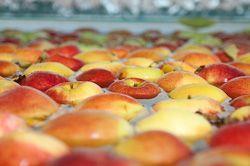
The apple industry in New Zealand - and in particular the South Island growing region of Nelson - is at risk of fading away over the next few years in the face of a high exchange rate and a fractured industry structure, according to comments from horticulture industry veteran John Palmer.
Mr Palmer, a former chairman of Zespri predecessor the Kiwifruit Marketing Board, told the Nelson-Tasman Chamber of Commerce last thursday the Nelson region could be without a viable apple export sector within five years.
He said many orchards were now more valuable without their trees, and would be “less of a cash drain growing grass than growing apples”, reported the Business Day.
A high exchange rate and a divided industry structure were the key culprits, he stated.
His comments have turned the public spotlight on some critical problems facing New Zealand’s apple industry. While the situation has been made worse this year by the jump in the New Zealand dollar, the sector’s financial troubles have been developing for a number of years.
“His comments are on the money generally,” John McCliskie, chairman of Nelson-based apple grower-marketer Heartland Fruit, told Fruitnet.com. “The whole New Zealand industry is at risk, as it is on the knife edge for sustainability.
“It is a continuation of the last few years, but is now critical due to the value of the New Zealand dollar, which has appreciated against all currencies dramatically in the last few months - nearly 30 per cent since February.”
The huge rise in the New Zealand dollar has effectively wiped out any chance that increased productivity or better market returns might turn fortunes around, according to Turners & Growers managing director Jeff Wesley.
“I think a lot of the frustration is from simply saying that we believe we’re as efficient as we can get, but compared to the exchange rate, it’s still exceedingly difficult to make money,” he told Fruitnet.com. “In the face of these enormous exchange rate changes, it’s very difficult to survive.”
The currency problems extend from New Zealand’s traditional and largest markets in Europe and North America to developing markets in Asia, but the latter is the real hope for the future, according to both Mr Palmer and Mr Wesley.
“It costs a heap in freight to get to `Europe and North America`, and you look at the level of government debt in those countries…the long-term future is in the booming markets of Asia,” said Mr Wesley.
“Demand across the whole of Asia from middle class buyers is booming. They’re looking for branded product, and New Zealand has a far better reputation for quality produce `than other suppliers`.”
Quite apart from the crippling exchange rate and difficulties in Western markets, Mr Palmer said the New Zealand pipfruit sector’s fractured structure meant potential returns were simply being “competed away” as exporters tried to undercut each other.
The industry has been making tentative steps towards a more unified structure this year, shown in initiatives such as this season’s cooperative marketing campaigns in the UK and India.
But reaching a stage that will make a significant difference to the industry’s bottom line is still a long way off, according to Mr McCliskie.
“The industry behaviour has contributed a lot to current conditions, and more of the same will destroy it,” he stated. “I am amazed that growers don’t understand how serious it is and exporters continue to assume that their competitive strategy is to undercut their neighbour.
“There is no chance of some collective `national` marketing structure in my view, but there could be some collective `marketing` in some markets. There is almost a death wish in New Zealand, but some of us will try and get some sanity in the next few months.”
Regardless of what happens down the track, it is extremely likely there will be casualties in the industry this year, with banks already reportedly taking critical looks at several industry players.
True to Mr Palmer’s predictions, Nelson, with its high percentage of smaller family-run orchards, is likely to be most vulnerable. New Zealand’s other major apple producing region, Hawke’s Bay, has a higher number of vertically integrated corporate growers, who are expected to be more resilient.






No comments yet